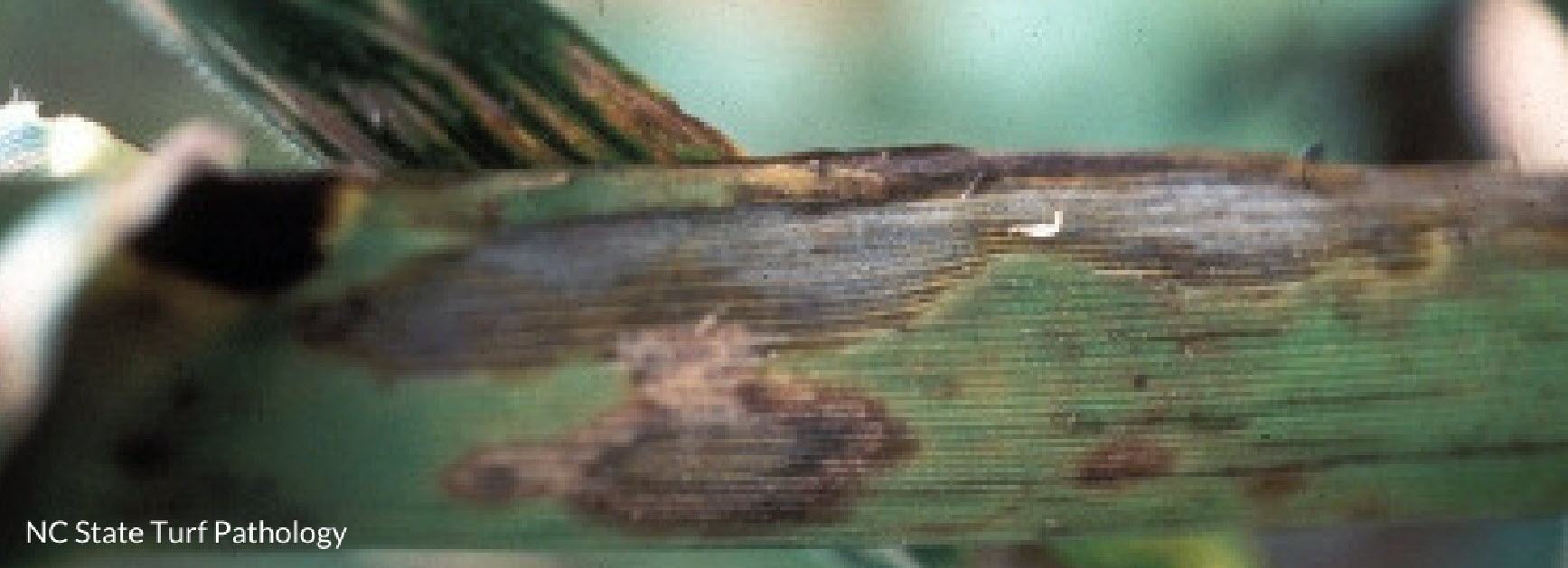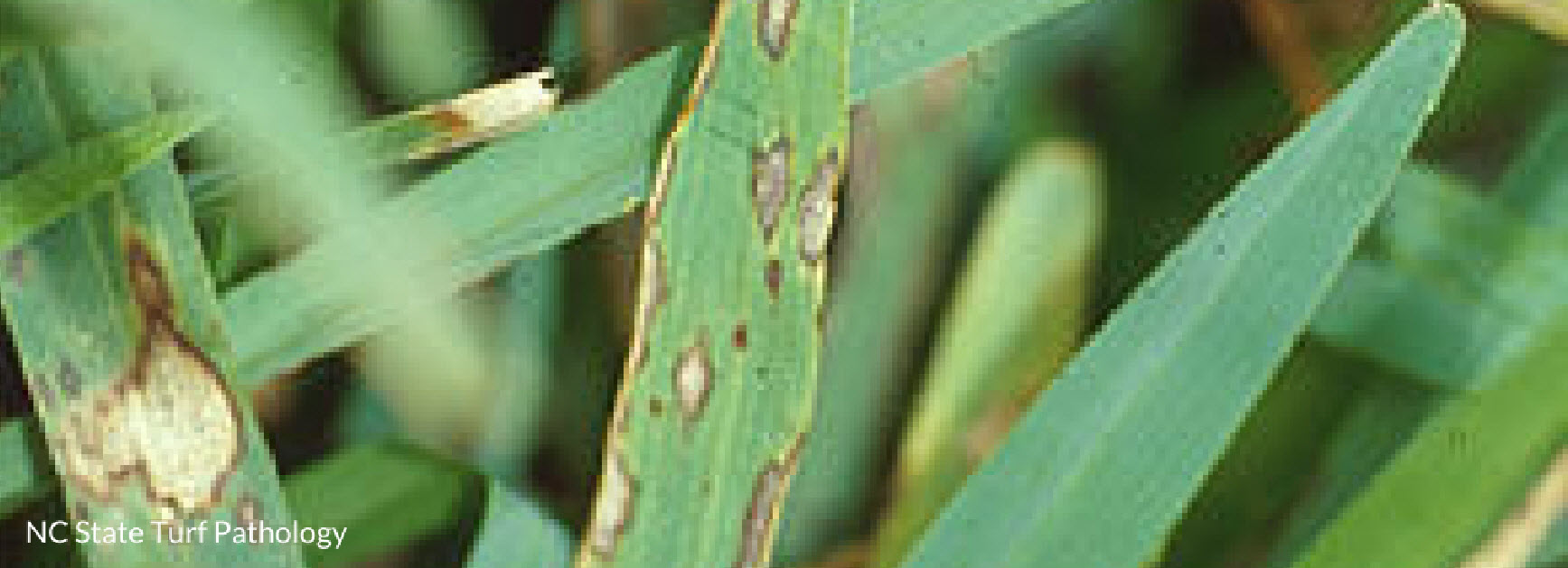Gray Leaf Spot


South (only)
Warm Season Grasses
Grass species affected
- Bermuda
- Perennial ryegrass
- St. Augustinegrass
- Tall fescue
- Other warm-season grasses
Disease occurrence
- Late-spring through summer
Symptoms
- Initial symptoms appear as narrow, dark-brown spots on leaf blades that enlarge over time into oblong to irregularly shaped lesions with dark-tan centers and dark-brown to purple margins.
Management
- Prevent gray leaf spot by maintaining a regular fertilization schedule using a fertilizer that releases nitrogen slowly, such as Milorganite.
- When a gray leaf spot is present, it can be managed with an application of quick-release nitrogen.
- Water deeply and infrequently early in the day to allow the leaf blades to dry off and not remain wet for long periods of time
- Mow unaffected areas first and diseased areas last to avoid infecting a healthy lawn.
- Collect and dispose of grass clippings in the garbage when rust is present.
- To avoid spreading the fungus, after mowing, clean the mower blades by rinsing with water and drying with a cloth.
- If gray leaf spot is persistent, consider replacing your lawn with a St. Augustinegrass cultivar derived from “Bitterblue,” which offers greater resistance to gray leaf spot.

